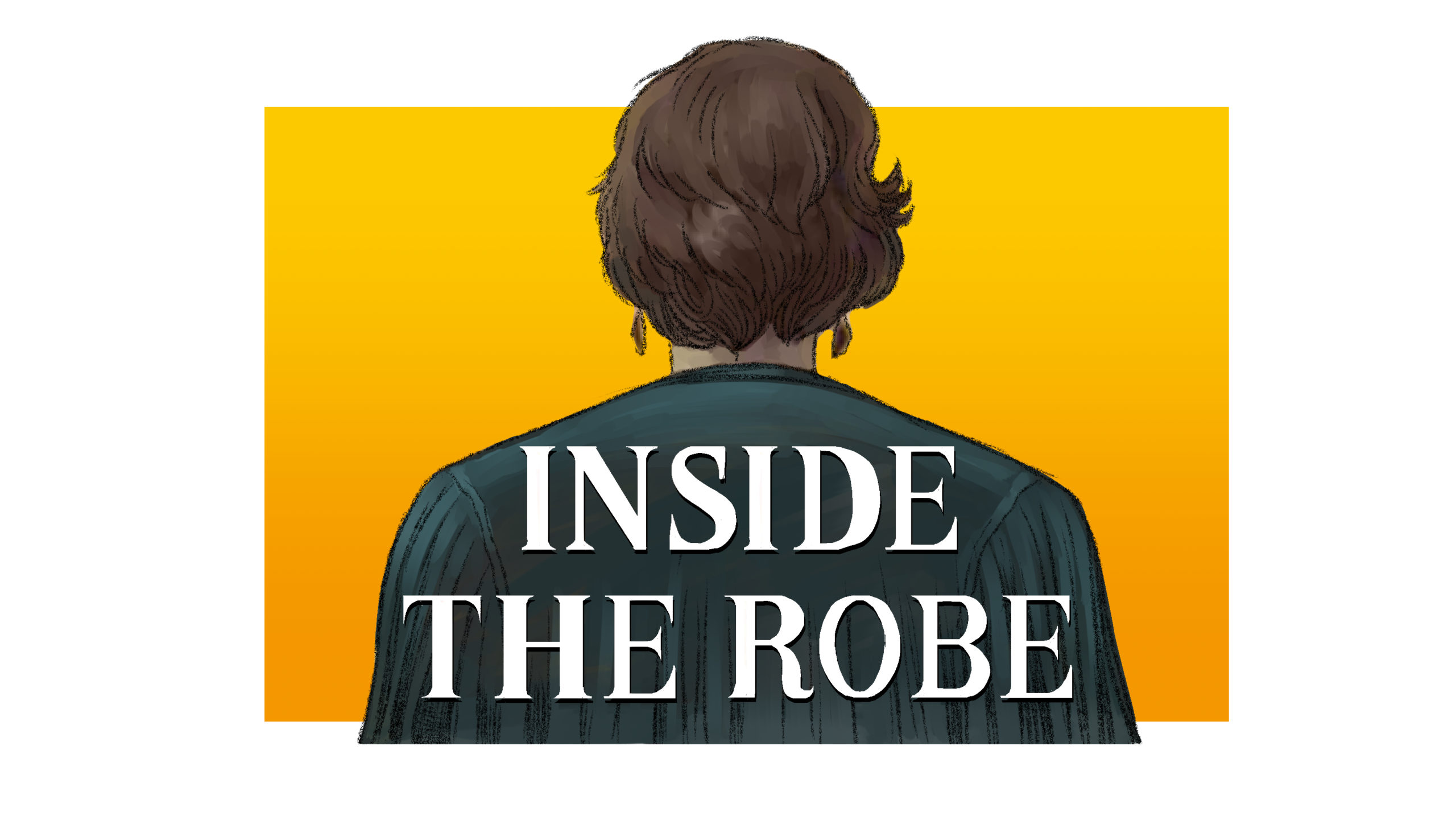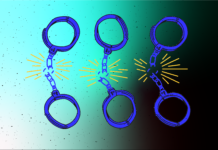Katherine Mader spent two decades as a judge in Los Angeles Criminal Court, before retiring early in 2020. Before that she was the LAPD’s first Inspector General, prosecuted two murder-for-hire trials and served as a defense attorney who convinced a jury to spare the life of the Hillside Strangler. In August of this year, Judge Mader published Inside the Robe: A Judge’s Candid Tale of Criminal Justice in America, which best selling author Michael Connelly called: “a perfect book: engrossing and telling at the same time.” The Judge has granted Crime Story permission to excerpt the entirety of her book over the coming months. You can find previous installments of Inside the Robe here. This is Part 3.
January
January 4
Wearing a jail-issued yellow shirt, a plump female defendant entered my courtroom, escorted by the bailiff. “Yellow shirts” are inmates classified by jail authorities as having mental health issues. This defendant appeared to understand the proceedings and engaged in dialogue with her appointed defense attorney. On my bench lay one of the manila court files created by court staff for each criminal case.
The defendant was charged with murdering her three-year-old daughter. Rather than being mentally ill, the defendant was developmentally disabled, meaning that she functioned at a low intellectual level. Mentally ill means that someone has a psychiatric illness that may be improved with medication and/or therapy. Developmentally disabled conditions are different and usually correlate with a low IQ, often since birth. Persons can be developmentally disabled to different degrees, with some living in institutions and others living independently and supporting themselves. Developmentally disabled persons are vulnerable to making mistakes that can land themselves and others in trouble. Thus, the need for extra guidance and support.
This developmentally disabled defendant was married and, at the time of her crime, lived in government housing with her husband, also developmentally disabled, their ten-year-old son and three-year old daughter, Emily. A county social worker checked in with them every day to protect the children as well as the parents from harm. But neither the social worker nor any other caregiver was around during the evening hours when the murder occurred.
According to the report prepared by the probation department, Emily refused to go to sleep. The defendant, Emily’s mother, became increasingly frustrated. Finally, she forcefully pushed Emily’s head into her pillow. Emily flailed her arms and legs, fighting for breath, until she went limp. When the defendant realized that she had suffocated her daughter, she worried that people would be angry with her. She tucked Emily into bed as though she were still alive and went to sleep. In the morning, Emily’s father discovered Emily’s body, and the defendant admitted what she had done. She had no prior criminal record.
What was my role as the judge? This case arrived as part of my morning calendar call. During the time slot between 8:30 and 10:30 a.m., I process around a dozen cases, each pending jury trial. The charges can range from robbery to child molestation to murder. The cases are mostly in the pre-trial phase, with separate attorneys waiting in line to ask for continuances or having their clients plead guilty for an arranged settlement.
My courtroom is wood-paneled, with seating for a twelve-person jury on my left. The courtroom has been unaltered for decades, with grease spots on the wooden walls marking the places where jurors’ heads rest as they lean back listening to trials. A wooden railing with a small swinging gate several feet above the gray institutional carpet separates the audience’s church-like pews from a fifteen-foot wooden attorney table. Clad in a deputy county sheriff’s uniform, Julie, my short and compact, brown-haired bailiff, monitors the small jail cell behind the courtroom to my right, and brings out defendants in custody when it’s time to hear their cases.
In his role of controlling the flow of witnesses and attorneys in and out of the courtroom, Michael, my long-standing clerk, sits behind a desk to my right, makes sure both sides are ready to speak to me on each case, confirms with the bailiff that a defendant in custody is ready to come out, and chases down missing attorneys, usually by furiously texting their cell phones. To see me, all of the parties must gaze upward. As Lady Justice, I sit several feet higher than the rest of the courtroom, hoping with my elevated status to gain respect and impress all who enter with my wisdom and intellect.
Around 95 percent of cases in Los Angeles County end up settling before trial, usually by plea bargain. I will be shepherding Emily’s case until it is resolved, which could take a year or more. A murder case can appear on my calendar more than twenty times before it is resolved or tried.
After handling the morning’s cases, the rest of the day is reserved for hearing jury trials.
When I described Emily’s plight to a fellow judge who does not work in the criminal arena, she blanched. “That is the exact reason I left criminal. I can’t handle hearing cases like Emily’s. I don’t see how you do it. I would have nightmares for weeks if my caseload contained similar cases to Emily’s.”
Judges have varied sensitivities and eventually we usually land assignments in courts fitting our personalities. I don’t have a problem compartmentalizing this murder case from the rest of my life. After forty-three years of criminal law, there are still factual scenarios that keep me up at night, but this case is not one of them. I worry more whether I made a correct legal ruling or how to get attorneys to stop fighting with each other, or with me.
As I’ve become more experienced, I react less personally to cases before me. There’s a term for judges becoming too personally involved in a case: “embroilment.” I may never learn much more about Emily’s situation than what I’ve already described. The social welfare system will make all the decisions about the other child in the home and what should happen to the family. I am never notified. While Emily’s death is an emotional tragedy, judges play only a small part in its unveiling. When and if it is ready for a jury trial, I may not be assigned to try Emily’s case. That’s fine with me. I don’t relish hearing more details about the death of a child. I don’t want to see the pictures, either.
I also hate watching blood and gore on a television screen, except a screen in my courtroom flashing photographs relating to a trial. I close my eyes during violent scenes at the movies. Yet, as one of the defense attorneys in the “Hillside Strangler” trial in the early 1980s, I grew accustomed to analyzing intricacies of strangulation marks on the necks of female murder victims. Last year, I conducted a murder trial in which a decomposed head and other body parts were scattered in a local park and photos of them were displayed on a giant screen in my court during the jury trial. The defendant’s computer search history even included “How to butcher a human carcass for human consumption.” I manage such horrific evidence impassively, but please don’t ask me to watch Game of Thrones.
These distinctions don’t make sense. A psychologist friend suggested, “When you watch suspenseful movies or TV shows, you have no control over the action. The music and tension make you feel anxious and apprehensive. In your courtroom, you control it all. You decide when to display the gore. You’ve already seen it at your own pace. You decide how long a severed head stays on the screen. That makes it more palatable.” Perhaps, but I think it has more to do with an ability to compartmentalize.
You can acquire the entirety of Judge Mader’s Inside the Robe: A Judge’s Candid Tale of Criminal Justice in America here.



